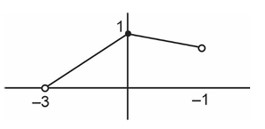Do the Shiksha's NCERT Solutions cover all exercises and examples in the Class 11 Math Three-Dimensional Geometry?
-
1 Answer
-
Yes, NCERT Solutions for Class 11 Math 3D Geometry chapter provided by Shiksha, covers all questions in each exercise of the chapter included in the NCERT textbook. Students can access and download the 3D Geometry Class 11 Maths NCERT Solution PDF provided on shiksha's pages. Students can use Solution PDF to study offline when they don't have access to internet.
Similar Questions for you
...(1)
–2α + β = 0 …(2)
Solving (1) and (2)
a = 1
b = 2
-> a + b = 3
Start with
(1)
(2)
(3) GTE : 4!, GTN: 4!, GTT : 4!
(4) GTWENTY = 1
⇒ 360 + 60 + 60 + 24 + 24 + 24 + 1 = 553
->g(x) = |x|, x Î (–3, 1)

Range of fog(x) is [0, 1]
Range of fog(x) is [0, 1]
First term = a
Common difference = d
Given: a + 5d = 2 . (1)
Product (P) = (a1a5a4) = a (a + 4d) (a + 3d)
Using (1)
P = (2 – 5d) (2 – d) (2 – 2d)
-> = (2 – 5d) (2 –d) (– 2) + (2 – 5d) (2 – 2d) (– 1) + (– 5) (2 – d) (2 – 2d)
= –2 [ (d – 2) (5d – 2) + (d – 1) (5d – 2) + (d – 1) (5d – 2) + 5 (d – 1) (d – 2)]
= –2 [15d2 – 34d + 16]
at
-> d = 1.6
16cos2θ + 25sin2θ + 40sinθ cosθ = 1
16 + 9sin2θ + 20sin 2θ = 1
+ 20sin 2θ = 1
– 9cos 2θ + 40sin 2θ = – 39
48tan2θ + 80tanθ + 30 = 0
24tan2θ + 40tanθ + 15 = 0
-> ,
So will be rejected as
Option (4) is correct.
Taking an Exam? Selecting a College?
Get authentic answers from experts, students and alumni that you won't find anywhere else
Sign Up on ShikshaOn Shiksha, get access to
- 65k Colleges
- 1.2k Exams
- 681k Reviews
- 1800k Answers
